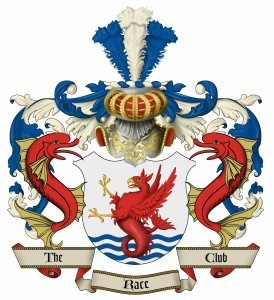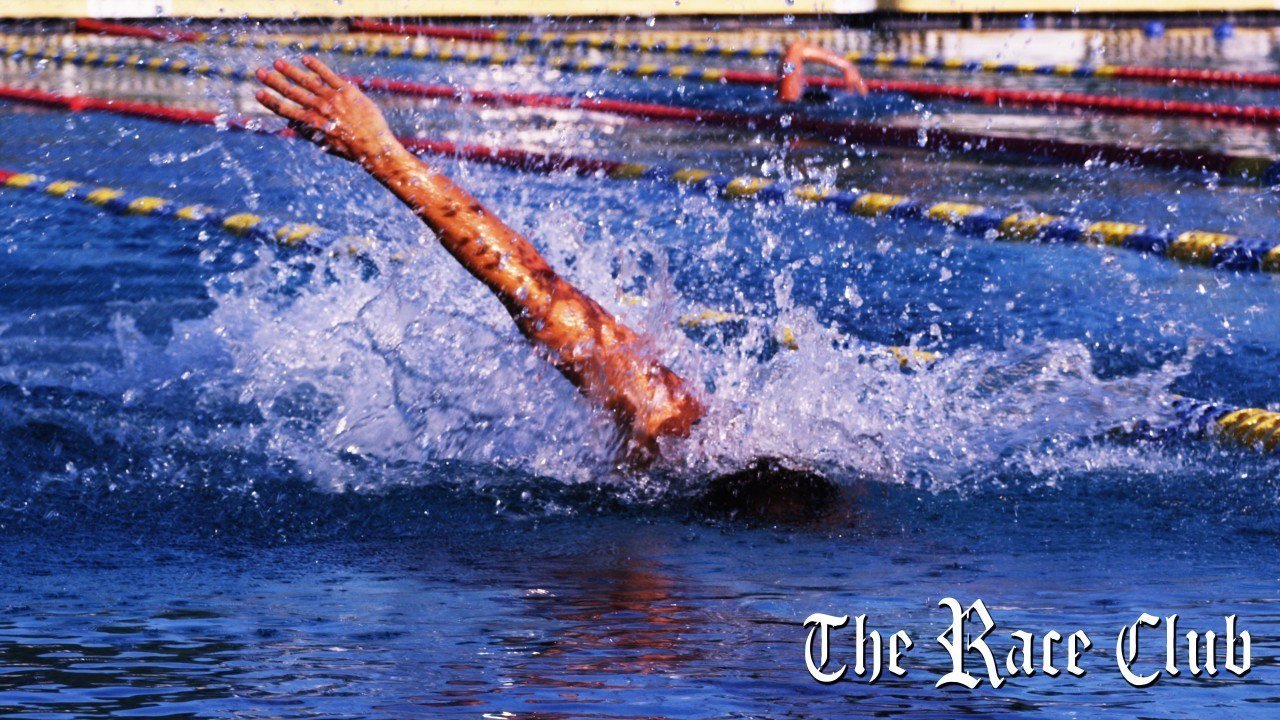Courtesy of Gary Hall Sr., 10-time World Record Holder, 3-time Olympian, 1976 Olympic Games US Flagbearer and The Race Club co-founder. (Swimmer in photo: George Bovell)
When you fill up your tank at the gas station, usually you are offered three grades of gasoline, regular (low octane 87), middle octane 91, and premium (high octane 93). The high-octane gas is more expensive, but it increases the energy and efficiency of the engine. It makes your car go faster.
In swimming, I like to describe the freestyle recovery as having three octane grades; low, medium and high.
The lowest octane recovery means that the elbow is bent almost maximally, the length of the arm reduced by half, as it recovers from the release phase after the propulsion and moves to the front of the body for the next stroke cycle. This form of recovery requires the least amount of energy for a given stroke cycle rate, and not surprisingly, it is what we see in most distance freestyle swimmers.
When we get to shorter, middle-distanced races like the 100 and 200 meters, we often see the hand elevating from the water, with the elbow less bent on the recovery. This middle-octane form of recovery requires more work than the low-octane recovery, but produces more kinetic energy for the same stroke rate.
Finally, in the sprint freestyle event, the 50 meter, we often see the hand elevated even further, or even a complete straight-armed recovery, the high-octane recovery. With the arm straightened, the radius of the arm has now doubled from the low-octane recovery stroke. If the stroke rate is the same as with the low-octane recovery, the kinetic energy in this motion is quadrupled. In fact, we often see the stroke rate in the 50 sprint at around twice that of the distance swimmers, which means the energy in the recovering arm may be 8 times greater than for the distance swimmer. That requires a lot more work of the swimmer to create all that energy. So why do it?
Once the stroke rate gets above 80 or so, the recovering arm becomes one of the two coupling motions of the freestyler. The other is the rotating body. The degree of coupling, augmenting the force of the underwater pulling arm, or the kick, is proportional to the energy in the coupling motion. In other words, the more energy in the recovering arm and/or the rotating body, the further down the pool we swim with each pull, so long as the two motions are connected.
Just like in the car, the faster we want to swim, the more octane we need in the recovering motion. Sprinters need high octane in order to win, while distance swimmers often like to use low to medium octane recoveries, saving their energy for the body rotation and the underwater pull and kick.
It makes no sense to use a high-octane recovery, requiring a lot of effort, if the stroke rate is around 60 or slower, a hip-driven freestyle. The reason is that the pulling arm is held out front during most of the recovering motion and by the time it starts its propulsion, the recovering arm is already in the water and lost its kinetic energy. In other words, there is no coupling going on with the pull with this slow of a stroke rate. The motions are not connected.
Because of the sheer mass of the upper body, the rotation of the body is the most important coupling motion we have in freestyle. Therefore, regardless of the level of octane used in the recovery motion, one should always use a fast body rotation with the pulling arm in propulsive phase.
In teaching these various forms of freestyle technique at The Race Club, we often imagine that there is a string going from the shoulders straight up to the sky. With each stroke, we try to get the swimmers to bring the elbow up to the string. In this way, regardless of whether the recovering motion is low, medium or high octane, with the elbow at the string, the body (or at least the shoulders) must be rotated fully. That means that the body must turn quickly to the other side in order for the other elbow to reach the string. The quickness of the body rotation creates a lot of coupling energy for the underwater pull. One can then add the recovering arm’s energy to the body rotation, low for distance, medium for mid distance or high for sprints, to optimize the technique for each race.
No one leaves The Race Club without having at least two freestyle techniques, because there is no one technique that works well for all distances. Some, like Race Club swimmer and Olympic champion Nathan Adrian, change their technique during the race. Nathan often goes from a mid-octane freestyle recovery to a high-octane, straight-armed recovery with a higher stroke rate to finish his 100-meter freestyle. Nathan wins a lot of races that way.
If you need to tune up your engine, come to The Race Club and let us help you determine what grade of arm recovery you need in your freestyle events.
Yours in swimming,
Gary Sr.

Gary Hall, Sr., Technical Director and Head Coach of The Race Club (courtesy of TRC)
Like The Race Club on Facebook
Follow The Race Club on Instagram
Follow The Race Club on Twitter
Connect to The Race Club / Gary Hall Sr. on Linkedin
THE RACE CLUB
Because Life is Worth Swimming, our mission is to promote swimming through sport, lifelong enjoyment, and good health benefits. Our objective is for each member of and each participant in The Race Club to improve his or her swimming performances, health, and self-esteem through our educational programs, services and creativity. We strive to help each member of The Race Club overcome challenges and reach his or her individual life goals.
 The Race Club provides facilities, coaching, training, technical instruction, video, fitness and health programs for swimmers of all ages and abilities. Race Club swim camps are designed and tailored to satisfy each swimmer’s needs, whether one is trying to reach the Olympic Games or simply improve one’s fitness. Our programs are suitable for beginner swimmers, pleasure swimmers, fitness swimmers, USA swimming or YMCA swimmers, or triathletes; anyone who wants to improve swimming skills. All of our Race Club members share an enjoyment of being in the water and use swimming to stimulate a more active mind and body.
The Race Club provides facilities, coaching, training, technical instruction, video, fitness and health programs for swimmers of all ages and abilities. Race Club swim camps are designed and tailored to satisfy each swimmer’s needs, whether one is trying to reach the Olympic Games or simply improve one’s fitness. Our programs are suitable for beginner swimmers, pleasure swimmers, fitness swimmers, USA swimming or YMCA swimmers, or triathletes; anyone who wants to improve swimming skills. All of our Race Club members share an enjoyment of being in the water and use swimming to stimulate a more active mind and body.

My son, a sprinter, is often criticised by club coaches for have a straight arm recovery, I’m from a track and field background and point out usain bolt and mo farah use different techniques due to the differing demands of their events, from now on I’ll simply point them in the direction of this article
As I recall, Octane in gasoline lowers the flash point of the fuel so that hot, high-compression engines won’t fire early during compression before the presence of a spark. I don’t remember from my college labs if it made a difference in efficiency or increased the energy, though, other than ensuring perfect timing of the combustion.
Make that “…increases the flash point…”
Is any octane connected with a certain pull? For example, a low octane freestyle is usually paired with a high elbow catch where as a high octane freestyle is generally associated with a deeper and straighter catch.
I would be interested in how this pertains to 3 of the top all-time American female distance swimmers. Katie Ledecky, Janet Evans, and particularly Leah Smith. They all seem to defy this characterization. Do you think they are all just working outside your model for some reason, or is there a different explanation?
Thanks for sharing such useful information with us all, Gary.
You are an inspiration!
You are welcome!